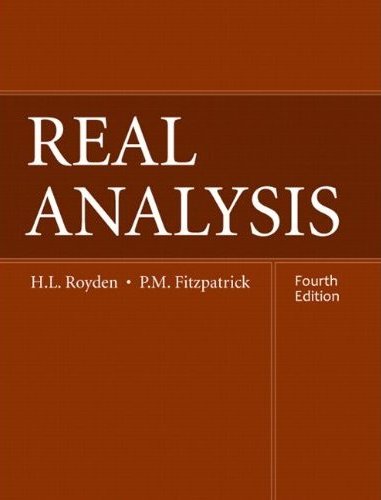 Henri Lebesgue, 1875-1941 |
 Stefan Banach, 1892-1945 |
 David Hilbert, 1862-1943 |
 Henri Lebesgue, 1875-1941 |
 Stefan Banach, 1892-1945 |
 David Hilbert, 1862-1943 |
COURSE: MATH 5220-001
TIME: TBA, PLACE: TBA
INSTRUCTOR: Dr. Robert Gardner, OFFICE: Room 308F of Gilbreath Hall
OFFICE HOURS: TBA, PHONE: 439-6979 (Math Office 439-4349)
E-MAIL: gardnerr@etsu.edu
WEBPAGE: http://faculty.etsu.edu/gardnerr/gardner.htm
TEXT: Real Analysis, Fourth Edition, by H.L. Royden and P.M. Fitzpatrick, Prentice Hall (2010).

CLASS NOTES: We will use projected digital notes for the component of the lecture consisting of definitions, statements of theorems, and some examples. Proofs of the vast majority of theorems, propositions, lemmas, and corollaries are available and in Beamer presentations and will be presented in class as time permits. The white board will be used for marginal notes and additional examples and explanation. Copies of the notes are online at:
ABOUT THE COURSE: We will build on the results of Real Analysis 1. We will cover, to some extent, Banach spaces and Hilbert spaces, though these are topics more appropriately covered in a functional analysis class (which will be offered during summer 2021). We may look at topological spaces. Time permitting, I want to cover some of the topics on general measure and integration such as signed measures, product measures, and the Fubini-Tonelli results. The fourth edition of Real Analysis states on page x that "The general theory of measure and integration was born in the early twentieth century. It is now an indispensable ingredient in remarkably diverse areas of mathematics, including probability theory, partial differential equation, functional analysis, harmonic analysis, and dynamical systems. Indeed, it has become a unifying concept."
GRADING: Homework will be assigned on a regular basis (weekly) and your grade on the homework will determine your grade for the course (so there are no tests!). Grades will be assigned based on a 10 point scale with "plus" and "minus" grades being assigned as appropriate (which means, based on how the university assigns grade points, 3 point intervals for plus and minus grades - for example, an A- corresponds to percentage grades of 90, 91, and 92). Remember that the lowest passing grade in a graduate course is a C, so you need an average of 73% on all assignments in order to pass this class.
A NOTE ABOUT HOMEWORK: While I suspect that you may work with each other on the homework problems (in fact, I encourage you to), I expect that the work you turn in is your own and that you understand it. Several of the homework problems are fairly standard for this class, and you may find proofs online. However, the online proofs may not be done with the notation, definitions, and specific methods which we are developing and, therefore, are not acceptable for this class. Your homework grade will also reflect how clearly you write up your solution and document your claims.
IMPORTANT DATES: (see the official ETSU calendar for more details; accessed 3/13/2020):
TENTATIVE OUTLINE:
5.2. Convergence in Measure.
6.6. Convex Functions and Jensen's Inequality.
Chapter 7: The Lp Spaces: Completeness and Approximation.
Lp spaces, Minkowski and Holder Inequalities, convergence and
completeness, Banach spaces, Riesz-Fischer Theorem, approximation, and separability.
Chapter 8: The Lp Spaces: Duality and Weak Convergence.
Bounded linear functionals, Riesz Representation Theorem, dual spaces, weak convergence.
Hilbert Spaces.
Hamel and Schauder bases, inner product spaces, completeness, projections, Hilbert spaces Isomorphisms, the Fundamental Theorem of Infinite Dimensional Vector Spaces.
Chapters 17 and 18: General Measure.
Signed measure, Caratheodory measure, outer measures, Caratheodory-Hahn Theorem.
Chapter 20: Particular Measures (partial).
Product measures, multiple integrals, theorems of Fubini and Tonelli.
| |
||||
Return to
Bob Gardner's home page
Last updated: May 10, 2020.